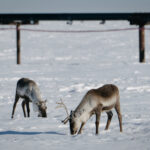Breast milk is universal — always has been. Whether it’s a poor woman in Africa breastfeeding her baby or a busy career woman in New York City expressing her milk with a pump so she can feed her baby when she gets home from work, mothers everywhere value breast milk… Continue Reading Consumer Education, For Consumers Food Safety News
Breast milk is universal — always has been. Whether it’s a poor woman in Africa breastfeeding her baby or a busy career woman in New York City expressing her milk with a pump so she can feed her baby when she gets home from work, mothers everywhere value breast milk for the nutritional benefits it offers to their infants — and also for its other important health attributes.
According to UNICEF, an agency of the United Nations, breastfeeding reduces the risk of sudden infant death syndrome (SIDS), childhood diabetes, heart disease, and obesity.
This August, the U.S. Breastfeeding Committee (USBC) is recognizing National Breastfeeding Month (https://www.usbreastfeeding.org/national-breastfeeding-month.html), by highlighting the reasons why protecting, promoting, and supporting lactation is so important for the human life cycle.
Yet not so long ago, women in “modern” times thought of breast feeding as “primitive” and were more than happy to switch to formula and bottles. In the United States, new moms left the hospital armed with information about bottle feeding but with nary a word about breast feeding. It was as though it was a thing of the past.
But times have changed and in recent years, breast feeding has seen a resurgence now that people are more aware of how important it is for the health of infants.
Currently, the World Health Organization (WHO) recommends exclusive breastfeeding for the first six months of life. The U.S. Dietary Guidelines for Americans recommend that infants be exclusively breastfed for about the first six months and then continuing breastfeeding while introducing appropriate complementary foods until the child is 12 months old or older.
Globally, the percentage of infants younger than six months exclusively breastfed has reached 48 percent, a 10 percent increase on the last decade.
Not just the baby
Surprisingly, breast milk isn’t food just for babies. It’s also food for the trillions of microbes that live in babies’ digestive systems and has evolved to promote the growth of microbes that help keep babies healthy, according to recent research.
Microbiologist David Mills, University of California-Davis, says that the third-largest constituent in breast milk is not there to feed the babies — it’s there to feed the microbes.
In saying that, he’s referring to human milk oligosaccharides, complex chains of sugars found in breast milk. These complex sugars bolster the kinds of intestinal bacteria that can digest the compounds into short-chain fatty acids — ones that babies need to thrive.
However, there’s still more to learn about babies’ digestive systems and the microbes involved.
What about breast pumps?
A breast pump is a mechanical device that lactating women use to extract milk from their breasts so it can be stored for later use.. They may be manual devices or automatic devices powered by electricity.
Women who breastfeed often resort to using a breast pump for times when they’ll be away from their baby. Going to school or to work are examples of that. By using a breast pump, a mother can use the milk at a later time to feed her baby. Breast milk pumped from a mother’s breasts is called expressed milk.
Food safety and breast milk
Pregnant women, babies and young children are among those at highest risk for foodborne illnesses, which means that food handling is especially important for them. And that’s doubly true when it comes to breastfeeding.
Here are some food-safety tips for breast feeding or feeding expressed milk:
Before expressing your breast milk, wash your hands with soap and water or with an alcohol-based hand sanitizer that contains at least 60 percent alcohol.
Make sure the area where you are expressing your milk is clean. That also goes for the pump parts and bottles.
Breasts and nipples do not need to be washed before pumping.
Date your milk when you freeze it. Store breast milk in the back of the freezer, not in the freezer door. That’s because the door is the warmest spot in the freezer and you don’t want to defrost the milk unintentionally.
Follow the manufacturer’s recommendations for preparing bottles before filling them with breast milk or formula.
Transport bottles in an insulated cooler when traveling. Perishable items (milk, formula, or food) left out of the refrigerator or without a cold source for more than two hours should not be used. Cold temperatures keep most harmful bacteria from multiplying.
Breast milk can be stored in an insulated cooler with frozen ice packs for up to 24 hours when traveling. But as soon as you reached your destination, either use the milk right away, store it in the refrigerator, or freeze it.
Don’t put a bottle back in the refrigerator if the baby doesn’t finish it. Harmful bacteria from a baby’s mouth can be introduced into the bottle during feeding; they can grow and multiply even after refrigeration (some bacteria can grow at refrigerator temperatures) and reheating. The temperature that’s needed to kill harmful bacteria is extremely high for consumption by a baby.
Heating breast milk
Breast milk does not need to be warmed. It can be served room temperature or cold. But to warm it, use hot water by by putting the bottle under running tap water until the desired temperature is reached. This should take one-to-two minutes.
Or heat water in a pan but don’t put the bottle in the pan while heating the water. Remove the pan from the heat and set the bottle in it until it’s warm.
When heating the milk, always shake the liquid to even out the temperature and test on top of your hand — not the wrist as this is one of the areas least sensitive to heat — before feeding. Milk that’s “baby-ready” should feel lukewarm.
Heating breast milk in the microwave is not recommended. That’s because studies have shown that microwaves heat baby’s milk and formula unevenly. This results in “hot spots” that can scald a baby’s mouth and throat.
How to store breast milk after expressing it
Use breast milk storage bags or clean, food-grade containers to store expressed breast milk. Make sure the containers are made of glass or plastic and have tight fitting lids.
Never store breast milk in disposable bottle liners or plastic bags that are not intended for storing breast milk.
Freshly expressed or pumped milk can be stored:
•At room temperature (77 degrees F or colder) for up to 4 hours.
• In the refrigerator for up to 4 days.
• In the freezer for about 6 months is best; up to 12 months is acceptable. Recommended storage times are important to follow for best quality.
If you don’t think you will use freshly expressed breast milk within 4 days, freeze it right away. This will help to protect the quality of the breast milk.
When freezing breast milk, store small amounts to avoid wasting milk. Store in 2 to 4 ounces or the amount offered at one feeding.
Leave about one inch of space at the top of the container because breast milk expands as it freezes.
Go here (https://www.cdc.gov/breastfeeding/php/guidelines-recommendations/faqs.html) to learn more about storing and using breast milk.
Cleaning pumping equipment
Carefully clean, sanitize, and store pump equipment, baby bottles, and other feeding items to protect your breast milk from contamination.
Go here (https://www.cdc.gov/hygiene/faq/index.html) to see Centers for Disease Control guidance on how to safely clean and store pump equipment and infant feeding items.
(To sign up for a free subscription to Food Safety News,click here)








